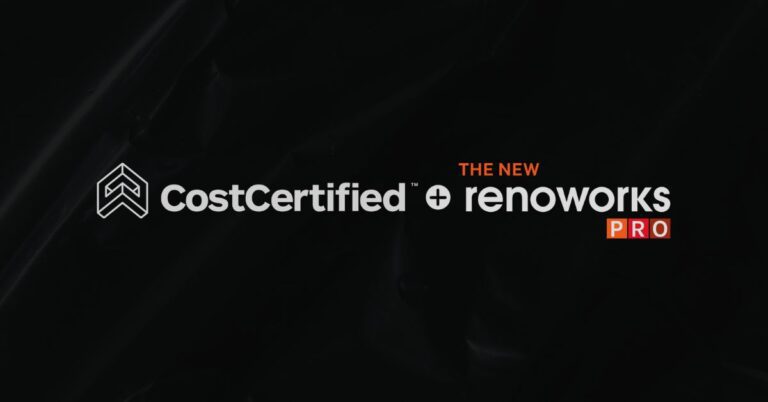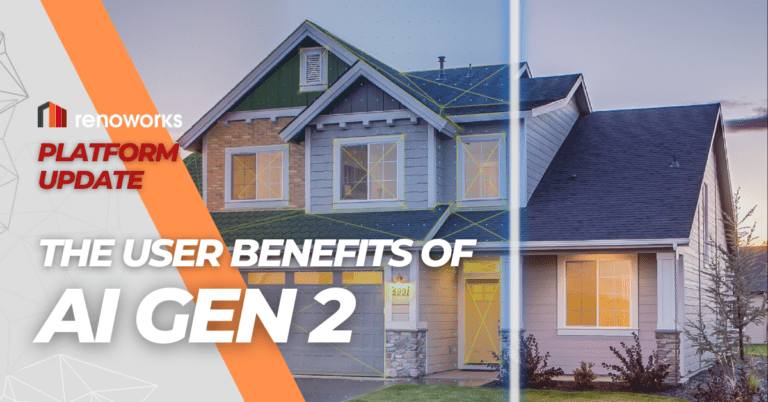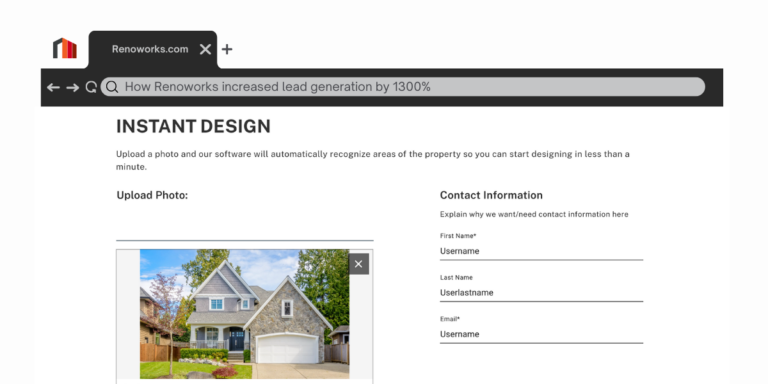Introduction
Have you ever stood in your yard and admired a neighbor’s sleek, shimmering metal roof under the morning sun? Metal roofing panels are more than just eye-catching; they’re among the most durable roofing options available. But did you know there’s a whole world of different types to explore?
Imagine choosing between aluminum that reflects heat like an armor shield or copper that ages gracefully into verdant patina over time. Each type offers unique benefits and aesthetic appeal, yet understanding these differences can be daunting with all the interchangeable terminology.
Metal roofing has gained popularity for homes, thanks to its durability and aesthetic appeal. When considering different types of metal roofs, it’s crucial to understand their unique characteristics and benefits.
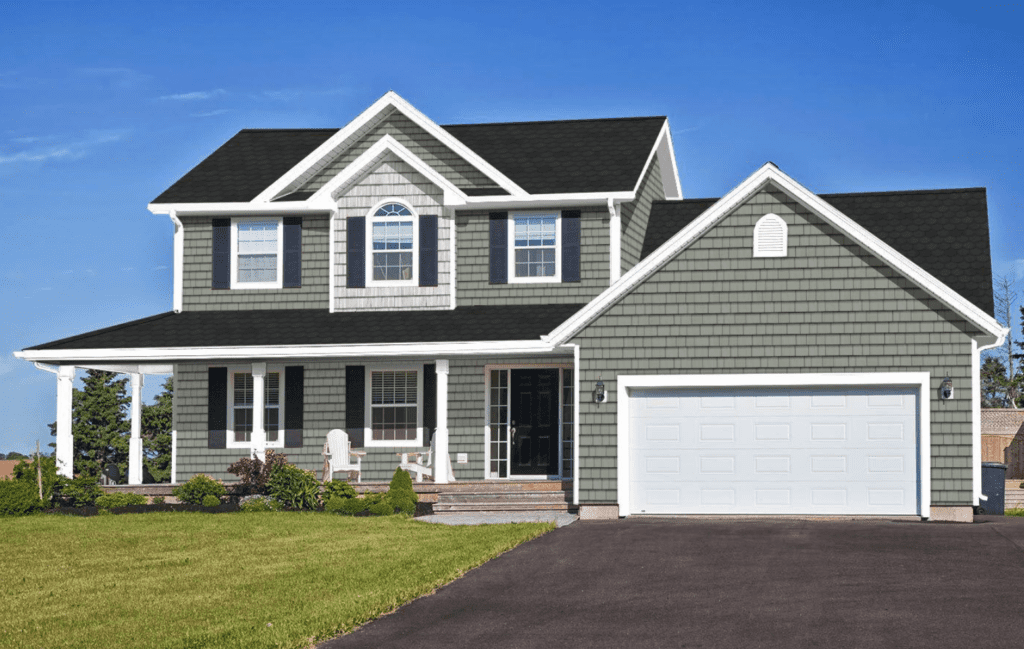
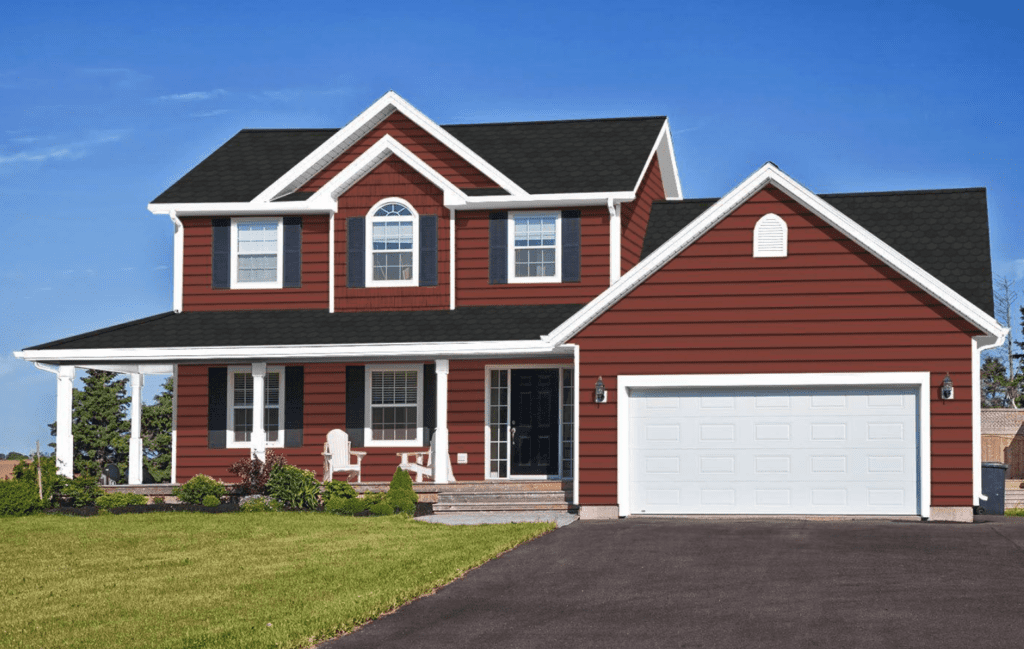
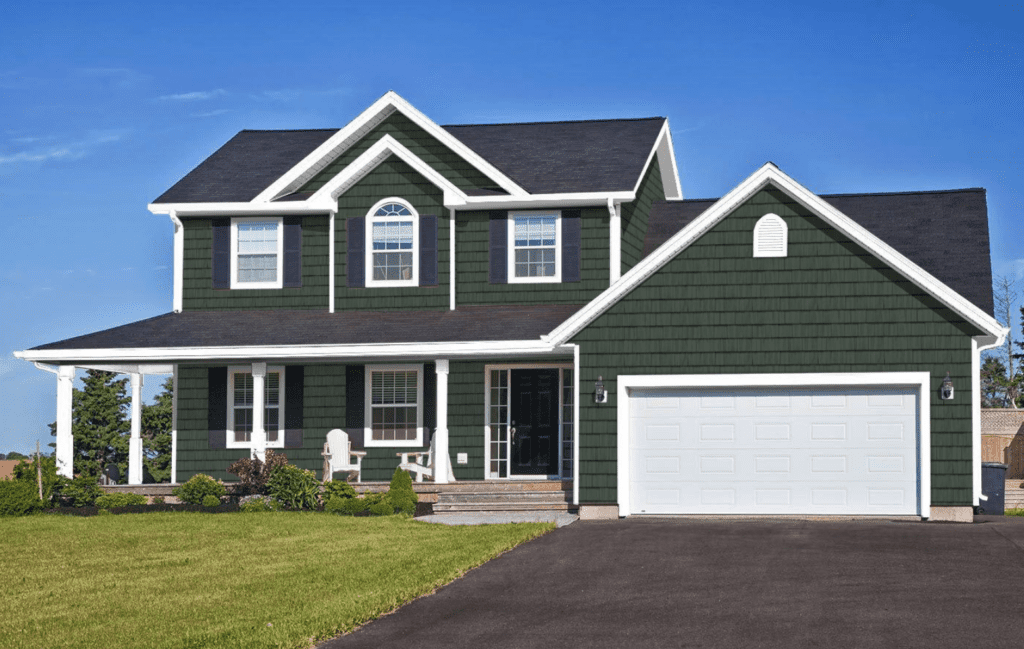
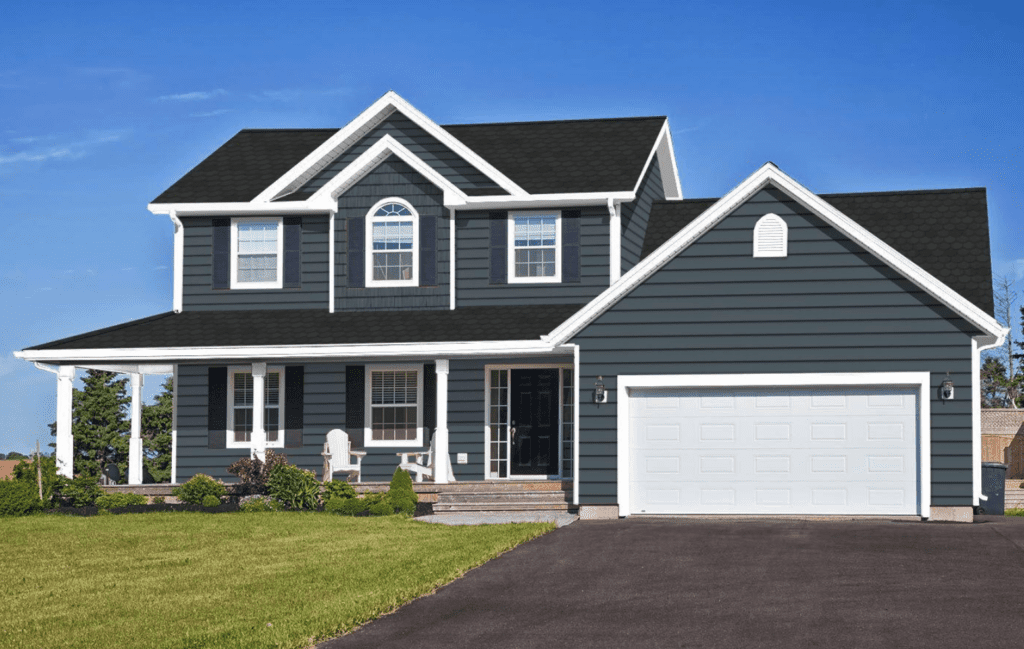
ROOFING VISUALIZER TOOL
Design A Roof In 5 Minutes
Help your homeowners visualize new roofing and colors on their own home with Renoworks’ AI technology in seconds.
- Easy-to-use interface designed for contractors and professionals working with homeowners.
Benefits of Metal for Residential Roofs
Metal roofing offers several compelling benefits that make it an attractive choice for homeowners seeking durability, energy efficiency, and aesthetic versatility.
Longevity and Durability
Metal roofing panels can last up to 50 years or more with proper installation. Unlike traditional asphalt shingle roofs that may need replacing every 20-25 years, metal roofs resist rot, mildew, and pests. For example: a homeowner in coastal regions might choose aluminum due to its superior corrosion resistance compared to steel roofs.
Energy Efficiency
Metal roofs reflect solar rays effectively which reduces heat gain during summer months while retaining warmth in winter. This leads to lower energy bills over time as the reliance on air conditioning diminishes significantly. According to the U.S Department of Energy (DOE), reflective metal roofing can reduce cooling costs by up to 25%.
Environmental Impact
Many metal roofing panels are made from recycled materials like aluminum cans or reclaimed steel beams which minimizes waste production at manufacturing stages Additionally when these durable structures reach end-of-life they’re fully recyclable themselves contributing zero landfill impact—a sustainable option indeed!
Choosing such environmentally friendly options supports green building practices aimed toward reducing carbon footprints globally making responsible choices now means healthier planet future generations inherit tomorrow!
Aesthetic Versatility
One major perk? Their aesthetic versatility! With countless styles, materials, and roof colors available, homeowners aren’t limited anymore allowing them creativity freedom aligning perfectly desired architectural vision personal taste whether modern minimalistic farmhouse chic industrial rustic charm anything between!
Examples include:
Standing Seam metal roofs – Streamlined look excellent water resistance ideal contemporary designs.
Corrugated metal roofs – Industrial vibe economical choice perfect barn-style structures.
Imagine driving through neighborhood seeing variety unique beautiful rooftops each reflecting individual owner’s personality style wouldn’t want own slice visual delight?
Types of Metal Roofing Materials
Metal roofing materials offer a blend of durability, aesthetics, and versatility for residential roofs. Let’s dive into the unique characteristics of various types of metal roofing systems to help you make an informed decision.
Aluminum
Aluminum roofing stands out for its lightweight nature and exceptional rust resistance. Weighing as little as five pounds per square foot, aluminum is perfect for structures that require minimal weight on their frame. Imagine a roof that not only reflects heat efficiently but also remains durable against hailstorms and high winds – that’s what an aluminum roof offers! It’s eco-friendly too; made from approximately 95% recycled material, it could save up to 20% on heating and cooling costs annually. However, keep in mind it’s softer than other metals which makes it prone to dents if struck hard.
Copper
Copper roofs are like fine wine; they get better with age! Known for being the most expensive option among metal roofing materials due to their superior quality and longevity (often over 100 years), copper roofs boasts a striking reddish-brown hue that develops a beautiful green patina over time – think of historic buildings with timeless charm. This natural aging process adds character while providing unmatched durability against harsh weather conditions without needing frequent repairs or replacements.
Zinc
Zinc is a standout choice in metal roofing due to its longevity and self-healing properties. This material develops a protective patina over time, which helps it resist corrosion and scratches. Picture this: decades down the line, zinc maintains its integrity with minimal maintenance—no frequent touch-ups required!
In Europe, many historic buildings boast zinc roofs that have lasted centuries (Cullen et al., 2018). The durability isn’t just about lasting through seasons; it’s about weathering gracefully while maintaining an elegant appearance. If you want a roof that’s both low-maintenance and visually striking as it ages, zinc‘s worth serious consideration.
Galvanized Steel
Galvanized steel roofs combine affordability with robustness thanks to its coating of molten zinc which protects against rust (Metal Construction Association [MCA], n.d.). Imagine walking into your backyard after heavy rain—you can rest easy knowing galvanized steel metal roofs holds up well under such conditions without succumbing easily to rust or damage.
This option also provides versatility in design choices because manufacturers offer various colors and finishes suitable for different architectural styles—from modern minimalist homes needing sleek lines—to rustic cottages craving earthy tones reminiscent of old-world charm like barns dotting countryside landscapes across America today!
Styles of Metal Roofing Materials
Metal roofs come in various styles, each offering unique benefits and aesthetics. Here are some popular types you might consider.
Metal Shingle Roofs
Metal shingle roofs mimic the traditional look of asphalt or wood shingle roofs but provide superior performance. They’re lightweight yet durable, offering an eco-friendly option since many are made from recycled materials. Imagine having the aesthetic charm of classic shingles combined with enhanced protection against elements like wind and hail – that’s what metal shingle roofs offer.
Corrugated Metal Roofs
Corrugated metal roofs stand out because of their distinctive wavy pattern, providing not only visual interest but also structural strength at an affordable cost range. They fit various home styles while being light on your wallet compared to other types—though one might need to account for potential noise during heavy rains due to exposed fasteners.
Metal Tiles
Metal tiles replicate Mediterranean-style clay or concrete tiles’ elegance without compromising on weight or durability concerns typically associated with those materials. Their interlocking system enhances resistance against harsh weather conditions—a perfect choice if you want old-world charm coupled with new-age resilience underfoot.
Standing Seam Metal Roofs
Standing seam metal roofs feature vertical panels with concealed fasteners, creating a sleek appearance that’s both modern and timeless. These roofs excel in durability due to their weather-resistant design. Homeowners often choose standing seam roofs for their longevity; they can last over 50 years without significant maintenance.
Cost Considerations
When choosing a metal roofing system for your home, cost is an essential factor to weigh against durability and aesthetics. Metal roofs are significantly more expensive than asphalt shingles upfront, but their durability and longevity makes up for the higher upfront costs.
Panel Style
Exposed fastener panels like corrugated metal roofs generally come at a lower price point compared to concealed fastener options like standing seam roofing. For instance, if you’re looking for affordability without sacrificing quality, exposed fastener panels might be the way to go as they can be half the cost of their concealed counterparts. However, these savings come with trade-offs; exposed fasteners may require more frequent maintenance due to potential weather exposure.
Metal Material
The type of metal used significantly impacts overall costs. Aluminum roofs tend to be less expensive than copper or steel roofing alternatives, with galvanized steel coming at the lowest price point. Take aluminum corrugated roofing: it’s popular not only because it’s budget-friendly but also due to its corrosion resistance—ideal for coastal areas where saltwater could corrode other metals faster. Steel roofs offers another robust option often seen in both standing seam and corrugated forms:
Consider how each material performs under different conditions when budgeting your project since initial investments vary by metal type’s longevity benefits.
Installation Costs
Installation costs vary based on several factors including types of metal roofing materials and roof style. Corrugated metal roofs cost $4 to $11 per square foot due to simpler installation methods involving exposed fasteners. In contrast, standing seam metal roofs range from $7 to $15 per square foot since they use concealed fasteners that require more skillful labor.
Here are some examples of the 10 most popular metal roofing choices based on a combination of the metal roofing material and style, taking into account materials and installation costs:
- Galvanized Steel Standing Seam Metal Roofs: $7 – $12 per sq ft
Aluminum Standing Seam Metal Roofs: $8 – $15 per sq ft
Galvanized Steel Metal Shingles: $6 – $10 per sq ft
Aluminum Metal Shingles: $7 – $12 per sq ft
Galvanized Steel Metal Tiles: $7 – $10 per sq ft
Aluminum Metal Tiles: $8 – $12 per sq ft
Galvanized Steel Corrugated Metal Roofs: $4 – $8 per sq ft
Aluminum Corrugated Metal Roofs: $5 – $9 per sq ft
Copper Standing Seam Metal Roofs: $15 – $25 per sq ft
Copper Metal Shingles: $14 – $22 per sq ft
Long-Term Value
Though initial investment might seem steep compared to traditional shingle roofs averaging around just few dollars less than some high-end types here discussed above; long-term value offered makes worthwhile consideration especially given benefits extending beyond mere durability aspects alone!
Take energy efficiency example where reflective nature helps keep homes cooler during summer months thus reducing reliance upon air conditioning systems ultimately translating into lower utility bills year-round too potentially saving hundreds annually depending usage patterns specific location climate conditions involved respectively!




ROOFING VISUALIZER TOOL
Design A Roof In 5 Minutes
Help your homeowners visualize new roofing and colors on their own home with Renoworks’ AI technology in seconds.
- Easy-to-use interface designed for contractors and professionals working with homeowners.
Key Factors to Consider When Choosing Metal Roofing Materials
When choosing metal roofing materials for residential roofs, several key factors come into play. It’s essential to consider these elements carefully to ensure the right choice.
Climate and Weather Conditions
Metal roofing panels excel in various climates due to their durability and weather resistance. However, different metals perform better under specific conditions:
Aluminum: This material is perfect for coastal environments because it’s corrosion-resistant.
Copper: Ideal for cold regions as it resists snow and ice effectively.
Zinc: Common in Europe, zinc roofs are durable with minimal maintenance needs, making them suitable across diverse climates.
For instance, if you live near the coast where saltwater can corrode many materials quickly aluminum roofs are your best bet thanks to its anti-corrosive properties. In snowy areas copper roofs stands strong against heavy snowfall preventing roof damage over time.
Home Style and Aesthetics
The style of your home significantly influences which type of metal roofing will look best:
Standing Seam: Known for a sleek modern appearance often used on contemporary homes, as well as farmhouses and barns
Metal Shingles: With their ability to mimic traditional asphalt shingles, they go well with traditional, colonial, and victorian styles of homes
Metal Tiles: Given their similarity to traditional clay or concrete tiles, metal tiles look great with Mediterranean and Spanish-style homes
- Corrugated Metal Roofs: Known for their rugged and utilitarian look, these roofs go well with rustic, rural, and industrial styles of homes
Imagine driving through a neighborhood; some houses have traditional shingle rooftops while others boast shiny metallic finishes catching sunlight at every angle creating an eye-catching scene! Your home’s architecture plays a pivotal role here – whether blending seamlessly or standing out boldly depends largely upon personal preference combined with architectural harmony.
Budget
Budgeting remains crucial when selecting any construction material including metal roofs. As discussed earlier, metal roofs have a significantly higher upfront cost, so make sure to take that into account and whether it fits into your budget compared to the typical costs of asphalt shingles which can sometimes be 2-5x cheaper.
Installation Tips for Contractors and Maintenance for Homeowners
Installing a metal roof requires precision and expertise to ensure durability, aesthetics, and energy efficiency. Below are essential tips contractors should consider.
Basic Installation Steps
To start with installing a metal roof:
Preparation: Remove old roofing material to inspect for damage or rot.
Underlayment: Install an underlayment layer (usually synthetic) as a moisture barrier.
Panels Placement: Align panels starting from the bottom edge of the roof moving upward; ensure overlaps prevent water.
Fastening Panels: Secure panels using appropriate fasteners—screws are common for corrugated roofs while standing seam roofs use hidden clips.
Sealing Joints & Edges: Apply sealants around joints and edges to waterproof vulnerable areas.
A well-installed metal roof offers decades of protection against weather elements when done right by professionals or knowledgeable DIY enthusiasts.
Routine Maintenance Tips
Regular inspections are vital in maintaining your metal roof‘s longevity:
Inspect annually for signs of wear like rust spots or loose panels
Clean debris off surfaces regularly
Address minor issues promptly before they escalate into major problems
Consistent upkeep ensures you catch potential issues early on—saving time, money—and extending overall lifespan significantly!
Long-Term Care And Repair
Long-term care requires attention but pays dividends by prolonging durability & appearance:
Monitor paint coatings frequently (every few years) since faded colors can affect curb appeal negatively
Replace damaged sections immediately upon detection—to avoid further deterioration
Case Studies and Success Stories
Diving into real-life applications, let’s explore how metal roofs have transformed homes across different regions.
Real-Life Examples
Consider a historic home in New England withstanding harsh winters year after year. The owners chose standing seam metal roofing due to its sleek appearance and superior weather resistance. Installed over two decades ago, this roof still looks new despite countless snowstorms and heavy rains. Its longevity speaks volumes about the durability of standing seam panels (Cornett Roofing).
In contrast, think about a coastal cottage on California’s Pacific coast where salt air wreaks havoc on traditional shingles. Here, aluminum corrugated roofing was selected for its rust-resistant properties (Arka Energy).
Lightweight yet durable it withstands high winds while providing an industrial aesthetic that complements the beachside vibe perfectly.
One more example comes from Texas ranch-style houses often battling intense sun and heatwaves daily throughout summer months each passing year; homeowners opted for stone-coated steel roofs because they reflect sunlight reducing cooling costs significantly during scorching days compared to asphalt alternatives saving energy bills annually without sacrificing style or performance capabilities long term too!
Conclusion
Choosing the right metal roof for your home involves careful consideration of factors like durability, aesthetics, and cost. With options ranging from aluminum to copper each type offers unique benefits that can enhance both the look and functionality of your house. It’s crucial to match the roofing material with your local climate and architectural style.
Understanding installation best practices ensures long-term performance so working with experienced contractors is essential. Real-life examples demonstrate how metal roofs have transformed homes across various regions showcasing their versatility.
Ultimately a well-chosen metal roof not only protects but also adds value making it a smart investment for any homeowner looking to blend sustainability with superior performance.
Frequently Asked Questions
What are the environmental benefits of metal roofs?
Metal roofs are highly recyclable, often made from recycled materials. They reduce waste and can be recycled at the end of their lifespan, making them an eco-friendly choice.
How long do metal roofs typically last?
Metal roofs generally have a lifespan ranging from 40 to 70 years depending on the material. This longevity far exceeds traditional roofing options like asphalt shingles.
Are metal roofs noisy during rain or hail?
Modern insulation techniques significantly minimize noise levels in metal roofing panels, making them no louder than other roof types when it rains or hails.
Do metal roofs attract lightning more than other types of roofing?
No, metal does not increase the likelihood of your home being struck by lightning. In fact, if struck, a metal roof safely disperses energy due to its non-combustible properties.
Is installing a metal roof more expensive compared to traditional shingles?
While initial costs for materials and installation might be higher for metals such as copper or aluminum compared to asphalt shingles, their durability and low maintenance often result in cost savings over time.
Can I install a new metal roof over my old one without removing existing shingles?
Yes, it’s possible but depends on local building codes and condition assessment by professionals. Installing over old layers can save labor costs but may require additional considerations for proper ventilation and structural support.




ROOFING VISUALIZER TOOL
Design A Roof In 5 Minutes
Help your homeowners visualize new roofing and colors on their own home with Renoworks’ AI technology in seconds.
- Easy-to-use interface designed for contractors and professionals working with homeowners.
Related Articles
Continue exploring this topic with these related articles, or read one of our case studies to see how visualization has helped remodelers save time and increase their profits.


